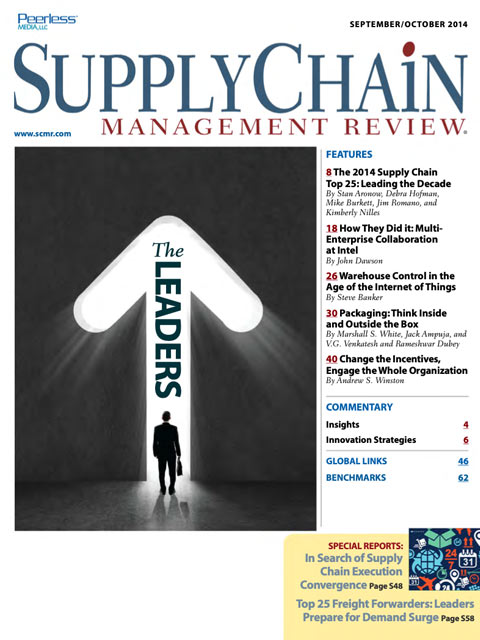Sorry, but your login has failed. Please recheck your login information and resubmit. If your subscription has expired, renew here.
September-October 2014
2014 marks the 10 year anniversary of the Gartner Supply Chain Top 25 ranking. This year we have a diverse set of large, global companies with mature, demand-driven supply chains. There are lessons to be learned from these supply chain leaders, many of whom have led their industries over the past decade. Browse this issue archive.Need Help? Contact customer service 847-559-7581 More options
The Council on Foreign Relations is among many think tanks noting that China’s environmental crisis is one of the most pressing challenges to emerge from the country’s rapid industrialization.
Indeed, its economic rise—which has averaged around 10 percent annual GDP growth for the past decade—has come at the expense of its environment and public health. As the world’s largest source of carbon emissions, China is responsible for a third of the planet’s greenhouse gas output and has more than half of the world’s twenty most polluted cities. For U.S. companies sourcing goods and components from this country, reducing greenhouse gas (GHG) emissions are of particular concern.
But a recent report by BSR in San Francisco suggests that this crisis is finally being addressed—by the Chinese themselves. China’s 12th Five Year Plan includes an entire section on the nation’s pollution problems. This plan is the platform for government operations under China’s leader, Ji Jinping.
 |
This complete article is available to subscribers
only. Click on Log In Now at the top of this article for full access. Or, Start your PLUS+ subscription for instant access. |
Not ready to subscribe, but need this article?
Buy the complete article now. Only $20.00. Instant PDF Download.
Access the complete issue of Supply Chain Management Review magazine featuring
this article including every word, chart and table exactly as it appeared in the magazine.
SC
MR
Sorry, but your login has failed. Please recheck your login information and resubmit. If your subscription has expired, renew here.
September-October 2014
2014 marks the 10 year anniversary of the Gartner Supply Chain Top 25 ranking. This year we have a diverse set of large, global companies with mature, demand-driven supply chains. There are lessons to be… Browse this issue archive. Access your online digital edition. Download a PDF file of the September-October 2014 issue.
 |
Download Article PDF |
The Council on Foreign Relations is among many think tanks noting that China’s environmental crisis is one of the most pressing challenges to emerge from the country’s rapid industrialization.
Indeed, its economic rise—which has averaged around 10 percent annual GDP growth for the past decade—has come at the expense of its environment and public health. As the world’s largest source of carbon emissions, China is responsible for a third of the planet’s greenhouse gas output and has more than half of the world’s twenty most polluted cities. For U.S. companies sourcing goods and components from this country, reducing greenhouse gas (GHG) emissions are of particular concern.
But a recent report by BSR in San Francisco suggests that this crisis is finally being addressed—by the Chinese themselves. China’s 12th Five Year Plan includes an entire section on the nation’s pollution problems. This plan is the platform for government operations under China’s leader, Ji Jinping.
 |
SUBSCRIBERS: Click here to download PDF of the full article. |
SC
MR

Latest Supply Chain News
- How S&OP provides the answer to in-demand products
- AI, virtual reality is bringing experiential learning into the modern age
- Humanoid robots’ place in an intralogistics smart robot strategy
- Tips for CIOs to overcome technology talent acquisition troubles
- There is still work to do to achieve supply chain stability
- More News
Latest Podcast

 Explore
Explore
Latest Supply Chain News
- How S&OP provides the answer to in-demand products
- AI, virtual reality is bringing experiential learning into the modern age
- Humanoid robots’ place in an intralogistics smart robot strategy
- Tips for CIOs to overcome technology talent acquisition troubles
- There is still work to do to achieve supply chain stability
- Blooming success: The vital role of S&OE in nurturing global supply chains
- More latest news
Latest Resources

Subscribe

Supply Chain Management Review delivers the best industry content.

Editors’ Picks





